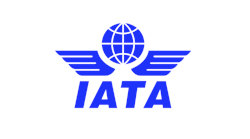A February 11, 2020 U.S. House aviation subcommittee hearing, “Looking Forward: The Future of America’s Aviation Maintenance and Manufacturing Workforce,” gave congressional leaders an opportunity to follow up with FAA and Government Accountability Report (GAO) representatives on action items falling out of the 2018 FAA Reauthorization bill.
Following witness testimony by representatives from Aviation High School, Vaughn College, Delta Air Lines, Gulfstream Aerospace and LIFT Academy, several subcommittee members made pointed remarks about the need for modernized aviation maintenance technical school regulations, noting that the congressional deadline to promulgate a new rule (April 5, 2019) had come and gone. In response, FAA senior advisor for Aviation Workforce Outreach Kate Lang stated that it was the agency’s intent to publish the final rule by year-end.
Echoing recent industry sentiment, Rep. Woodall (7-GA) suggested we reconsider whether the FAA should be dictating aviation program curriculum standards at all: “What is the regulatory role for the FAA moving forward if we can’t do it in an agile way? Should the FAA be telling everyone that we have to [train] this way, if it can't keep up with industry demands?"
Woodall was referring to the current, static curriculum mandates contained in 14 Code of Federal Regulations part 147, that require schools to teach long-outdated subject areas at the expense of newer, more relevant technologies. Industry recently provided its solution to modernizing aviation training and ensuring long-term viability by drafting performance-based regulatory language now contained in the Promoting Aviation Regulations for Technical Training (PARTT) 147 Act (S.3043/H.R.5427). The bill would remove FAA mandates and prescriptive requirements, set forth a framework for FAA oversight through certification standards and assessment and provide schools and industry the ultimate flexibility to create programs that meet local industry needs. In its testimony, Aviation High School supported passage of the bill, which currently resides with the aviation subcommittees in both the House and the Senate.
Committee members also inquired about the status of workforce grant program implementation, which Congress authorized to the tune of $5 million a year for five years. Lang reported that while the FAA was working on the initial eligibility requirements — and would consult with industry partners on the framework before it is finalized — she fell short of promising that grant dollars will be distributed this fiscal year. Congressional leaders reiterated that “time is of the essence” to ensure industry does not lose another year of funding. (While the program was authorized for 2019-2024, 2019 dollars went unspent due to congressional appropriations delays. Another year and another $5 million will be lost if the program is not implemented within the FAA’s 2020 fiscal year.)
The hearing came just days after GAO issued a new report on the aviation maintenance workforce. While the report recognizes limitations on datasets provided through the Bureau of Labor Statistics and the FAA, it ultimately concludes, as it did in a 2014 report, that “labor market indicators… (unemployment, wages, and employment)… were not consistent with the existence of hiring difficulties.” In other words, since wages are not going up and the population of current technicians is not increasing, GAO concludes there is no indication of a shortage.
ATEC takes issue with the finding given 1) the Bureau of Labor Statistics data is insufficient since it does not distinguish between certificated and non-certificated technicians. 2) the analysis does not appear to have taken into consideration looming retirements, and 3) ATEC data suggests otherwise.
The 2020 ATEC Pipeline Report contends that wages are in fact increasing. Respondents to a 2019 ATEC survey report an average starting hourly rate for AMTs alumni at $21.54 per hour; that’s up $1.84 (or 9 percent) from last year.
That said, the GAO conclusion is not necessarily counter to what industry has been seeing or saying — that the shortage may not be upon us now, but it soon will be. Indeed, a 2017 Oliver Wyman report indicated demand will not outstrip supply for maintenance technicians until 2023.





